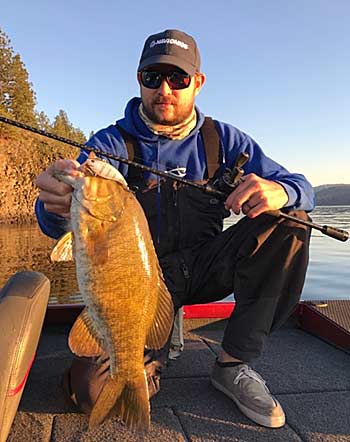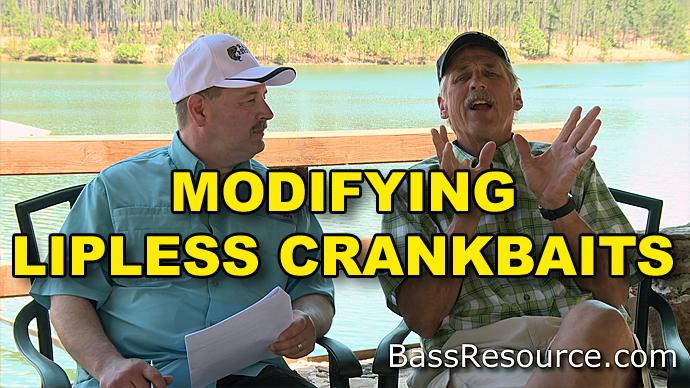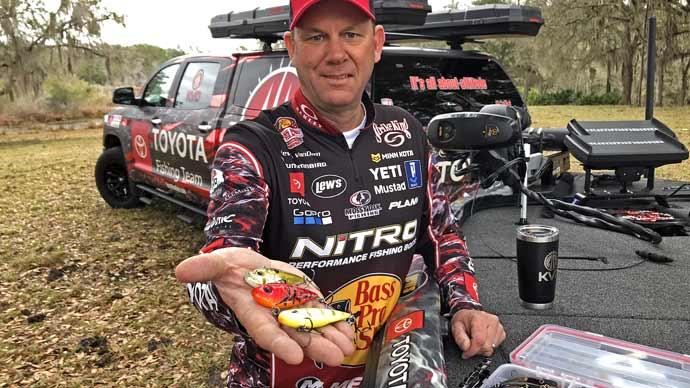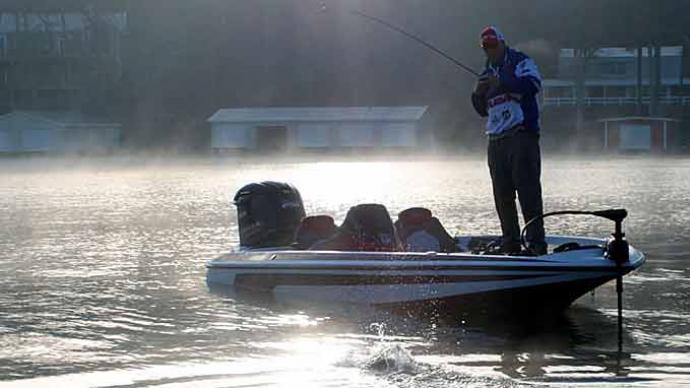
The lipless crankbait has been around for decades, and even though it's relatively straightforward, there are plenty of ways to fish them, depending on the conditions.
The loud noise, flashy finishes, and baitfish profile make them one of the most popular lures for today's bass angler. Lipless crankbaits are among the most productive and versatile baits in your box.
No matter how you fish them, they work. The most common way to fish a lipless is pretty straightforward: they can be cast and reeled back to catch fish. The more advanced way to fish them includes imparting more action and trigger strikes when the fish are conditioned to standard retrieves.
Lipless crankbaits can be fished with a 'yo-yo' retrieve or fished along the bottom by lifting and dropping your rod, fishing them around vegetation, and ripping them through the grass. Fishing a lipless crankbait this way will expand your uses of these baits and put more fish in the boat.
Pumping a Lipless or the "Yo-Yo" Retrieve
A blade bait is one of the best lures for when the water cools each fall and winter. The simple metal lure is fished with a lift and drop retrieve as it vibrates up and then falls back to the bottom. The lipless crankbait can do the same thing with the addition of a rattling sound. This fishing method is also called "yo-yoing," the bait as it moves up and down near the bottom, and all of the action is imparted by your rod.
Cast the bait, let it fall to the bottom, and then begin your retrieve. Then lift your rod to get the bait to rise, shimmy, and vibrate and then let it fall back down on a slack line. Many bites will occur right as the lure is lifted from the bottom or right as it starts to fall.

Like fishing a blade bait, the speed and how fish prefer the bait on a given day will vary greatly. Short and slow movements are best at times, and on other days, the bass like a much more aggressive action and a bait lifted several feet off the bottom. It's best to experiment with different retrieves and actions until you get a feel for what the bass want that day.
Fishing a lipless crankbait works excellent in extreme weather conditions when the fish are not very active, either in hot temperatures or early and late in the year when the water is at its coldest point of the year. This is a great way to get inactive fish to commit to a bait.
Some of the best places to fish a lipless this way are on the ends of points, along deep grass lines, and near any other offshore structure that will hold bass during these periods.
Ripping Grass
Treble hooks and grass usually don't go together very well, but a lipless crankbait is one exception. They can be fished effectively around grass and perform very well. The trick is getting them to make contact with grass without getting too much wrapped around the treble hooks, which will foul the bait and prevent it from working effectively. It's a balancing act sometimes but offers a way to fish a moving bait near the grass.
As the bait connects with grass, ripping your rod quickly will free much of the grass, and the aggressive action is an excellent trigger for bass in the area. The moment the bait is released from grass is where most strikes occur.
Finding grass edges and scattered vegetation are two key areas to look for when fishing ripping a lipless crankbait. The deep edges of hydrilla, milfoil, and other vegetation are prime areas to fish the technique. The method has become legendary on fisheries such as Lake Guntersville, Alabama because it works so well.
Selecting a Good Ripping Lipless and Gear
No matter the brand, most lipless crankbaits look pretty similar. They come in several different sizes and colors and have flat sides and a relatively oval shape. There is some variation in the rattle sound, finishes, and overall quality, but they all do the same thing.

When ripping a lipless, there is some variation as some have much thinner bodies that lend themselves to a slightly different action as they are pulled through grass or in open water. The Storm Arashi Vibe and the Duo Realis G-Fix Vibration Tungsten lipless crankbait are two great choices. Those are two good options, but ripping a lipless crankbait can be done with any lipless crankbait on the market.
Finding the right rod is another critical component, as the rod you use must have a little backbone to rip through grass and fight fish. Standard crankbait rods are not strong enough to handle it, and a baitcast rod seven feet or longer with a medium-heavy or heavy action should do the trick. Pair it with your favorite baitcast reel spooled with 12 to 15-pound fluorocarbon for open water ripping and 15 to 20-pound test fluorocarbon or 40-pound braided line when fishing around the grass.
The lipless crankbait has been around for decades and is still one of the top-producing lures because it works so well. Going beyond the standard retrieve will allow you to fish them in more situations and make them practical tools for you in all seasons. Ripping a lipless crankbait through grass and employing a yo-yo retrieve will give you more options and allow you to fish them year-round.
BassResource may receive a portion of revenues if you make a purchase using a link above.




